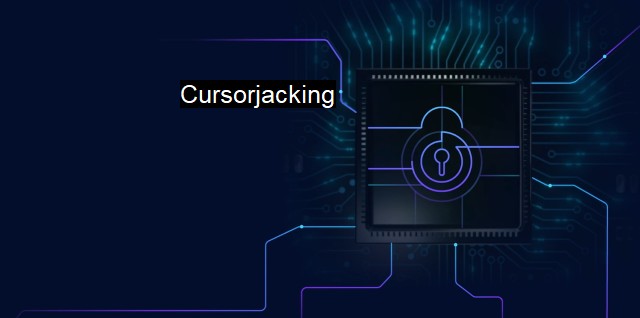What is Cursorjacking?
Surviving Cursorjacking: A Threat to Cybersecurity and How Antivirus Can Help
Cursorjacking is a deceptive technique used in cyber-attacks, whereby the culprit manipulatively repositions the user's computer mouse cursor without the latter's information or consent. It completely reverses the user interaction model, causing clicks to possibly lead to unintended actions. The technique takes place when the mouse cursor visibly stays in one place, but in reality, it is invisibly displaced by a hacker's covert invisible iframe manipulation technology, forcing unsuspecting users to get caught into unseen traps set by hackers. Hence, cursorjacking is a growing concern in the context of cybersecurity and antivirus software design and operations.In the digital world, the occurrences of cursorjacking are relatively widespread, as it can happen on any kind of website; all a cybercriminal needs to do is stealthily insert corrupted Javascript code. By making use of sneaky technique like adding an image overlay or changing the size of the cursor, a trickster can manipulate the click action, making it possible to register on a different location than where the user intended. Unknowingly, users can fall into this trap and carry out harmful actions such as clicking on ads, downloading malicious software, or even agreeing to illicit terms and conditions, which would otherwise be strictly avoided.
Cursorjacking attacks are usually aimed at frustrating the user or directly exploiting their interaction with a platform to make monetary gains. wielding more devastating outcomes, these attacks can cause a user to unwittingly install malicious software or access links teeming with viruses, thus compromising the security and performance of their systems or revealing sensitive data. These outcomes emphasize the relevance and necessity of cybersecurity measures, not just for files and systems, but also for user interfaces and interactions.
The severity and implications of these attacks have prompted the cybersecurity community to create antivirus software to minimize the risk of cursorjacking or eliminate it. Antivirus software, in this context, is not limited to scanning and eliminating malicious software from the user's system but can also detect and remove threats posed to user interaction and user interfaces.
A typical antivirus solution can effectively protect against cursorjacking attacks. Some antivirus software package checks for suspicious JavaScript behaviors, in addition to other countermeasures. It does not allow JavaScript code to reposition the cursor without the user's consent, thereby preventing illicit cursorjacking. Also, it restricts the usage of iframe technology for positioning cursors outside the visible screen area. In fact, with continuous cybersecurity developments, some modern antivirus solutions have machine learning and artificial intelligence capabilities embodied in their architectural framework to recognize cursorjacking attempts, rendering them nearly impervious to these sub-versions.
While cursorjacking is a significant cyber threat issue due to its covert nature and capacity to garner illicit gains for cybercriminals, the appropriate and effective use of antivirus software provides a strong defense against this threat. This form of virtual entity protection ensures that an innocent click does not sabotage the security infrastructure of an individual's or an organization's computing system. By protecting browser activities through tracking and scrutinizing cursor actions, modern cybersecurity applications are adept at identifying and warding off looming cursorjacking threats. Continual enhancements in cybersecurity regulations, collaborative efforts from tech companies, and advancements in antivirus capabilities would be paramount in curbing the menace of cursorjacking.

Cursorjacking FAQs
What is cursorjacking?
Cursorjacking is a type of cyberattack where the attacker takes control of the victim's mouse cursor and manipulates it to execute malicious actions on the victim's computer.How does cursorjacking work?
Cursorjacking works by injecting malicious code into a website or an advertisement that the victim visits. The code then manipulates the victim's mouse cursor to click on hidden buttons or links that can install malware or steal sensitive data.How can I prevent cursorjacking?
You can prevent cursorjacking by using anti-virus or anti-malware software that can detect and block malicious code. It's also important to keep your browser and operating system updated to the latest version to ensure that any security vulnerabilities are patched. Lastly, be cautious when clicking on links or advertisements from unknown sources.What should I do if I suspect I am a victim of cursorjacking?
If you suspect you are a victim of cursorjacking, immediately disconnect from the internet and run a full virus scan on your computer. Change all of your passwords and monitor your bank accounts and credit cards for any suspicious activity. It's also a good idea to contact your IT department or a cybersecurity expert for assistance.| | A | | | B | | | C | | | D | | | E | | | F | | | G | | | H | | | I | | | J | | | K | | | L | | | M | |
| | N | | | O | | | P | | | Q | | | R | | | S | | | T | | | U | | | V | | | W | | | X | | | Y | | | Z | |
| | 1 | | | 2 | | | 3 | | | 4 | | | 7 | | | 8 | | |||||||